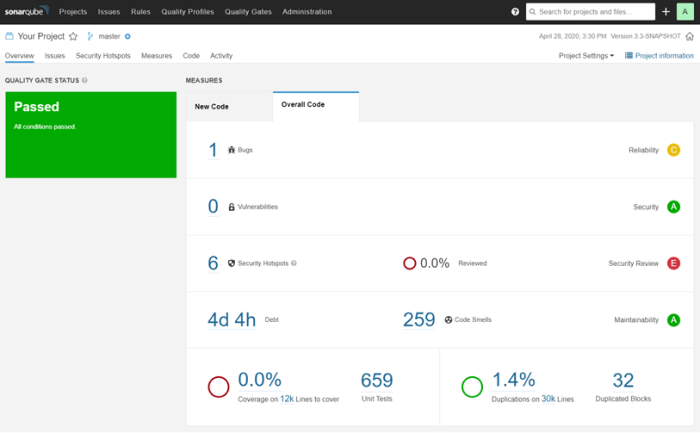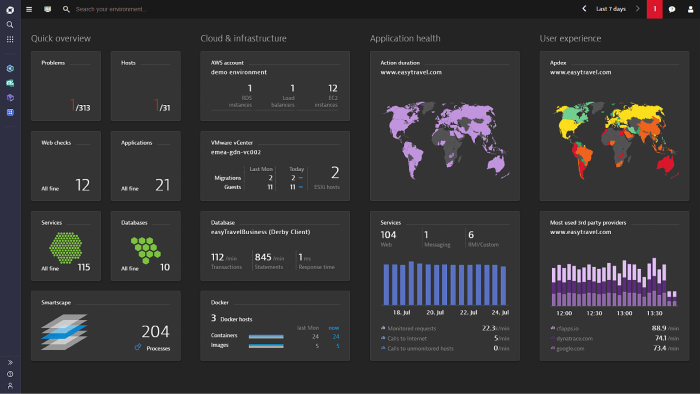
Technical debt is the outcome of taking shortcuts to create faster results in software development, resulting in ugly, complex, non-optimized code. The main reason for technical debt is the team prioritizing delivery over code quality, and the development team will have a harder time maintaining the code due to technical debt.
Hence, it has become essential to prevent technical debt from being introduced and mitigate any technical debt introduced as soon as possible. With the growth of artificial intelligence (AI), it has become much easier to reduce technical debt. By integrating AI into the development workflow, the team can reduce technical debt much faster and eliminate having ugly code in the first place. As a result, code will be easy to maintain and extend.
What is Technical Debt?
Technical debt refers to the issues that arise when development teams take shortcuts in software development to meet deadlines or achieve immediate goals. Although shortcuts make the development faster immediately, the long-term issues it cause can be costly and time-consuming to fix. So, it is important to understand what causes it in order to overcome technical debt. Technical debt can happen for the following reasons:
- Pressure to deliver quickly: Due to tight deadlines from project managers, developers tend to prioritize speed over quality. To meet these deadlines, developers might take shortcuts without optimizing the code, considering appropriate security, or writing unit tests.
- Inadequate requirements or design: When the requirements aren’t clear or change frequently, architects don’t have the time to design a scalable plan for the code. As a result, code can be harder to extend.
- Lack of best practices: Development teams might not follow coding standards or best practices due to lack of experience, insufficient training, or simple laziness. As a result, the code can be ugly and non-optimized.
- Legacy code and technology: Over time, legacy code can become outdated, making it harder to maintain. For example, some of the dependencies or library versions used in the code can be depreciated.
For example, let’s consider a real-world scenario. There’s an e-commerce project with tight deadlines. Due to the tight deadlines, the team decided to use in-house basic authentication instead of a third-party authentication service.
Even though the team can deliver by the deadline, this will result in technical debt over time since basic authentication is not secure enough and not capable of scaling. Therefore, after a few months, the team must review proper third-party authentication services and choose one.
Challenges of Managing Technical Debt Without AI
Managing technical debt without AI can pose difficulties. Here are some challenges:
1. Limited Visibility
Without AI tools, identifying technical debt can be complex. Without AI tools, developers must identify technical debt using manual methods like code reviews and assessments. These methods are very time-consuming. Furthermore, some areas might be missed from these code reviews. In addition, manual reviews cannot provide analyses of the entire code base at once.
2. Inefficient Prioritization
Without AI, developers are unable to prioritize which technical debt needs to be fixed first. This can lead to inconsistent prioritization based on individual experiences or immediate concerns rather than objective criteria.
3. Reactive Approach
Without using AI, it is difficult to identify technical debt before the application is deployed. Technical debt may only become visible when it causes significant issues, such as system crashes, poor performance, or high maintenance costs.
4. Resource Constraints
Manually identifying technical debt is very time-consuming and needs a lot of resources. For example, code needs to be reviewed by both the technical lead and the software architect. Furthermore, code reviews, manual testing, and refactoring efforts require a lot of time and effort from developers. Without AI, skilled developers are required to fix the technical debt properly.
The best solution to these challenges is to use AI.
How AI-Powered Tools Help Manage Technical Debt
AI-powered tools can eliminate the above-mentioned challenges related to technical debt. AI uses advanced algorithms and machine learning techniques to identify technical debt, prioritize it, and proactively identify it. Let’s look into it in detail.
1. Enhanced Visibility
Using static and dynamic analysis, AI tools are able to scan the entire code base and detect technical debt. They can detect code smells, vulnerabilities, and complex code with large methods. Furthermore, AI tools can provide visualization dashboards that highlight areas of technical debt. For example, you can use SonarQube, Code Climate, and Reshift to analyze your code.
2. Efficient Prioritization
AI tools like Refact.ai use previous data and predictive analytics to suggest which issues are most critical to address first. Also, tools like CodeGuru by Amazon use machine learning to offer better recommendations.
3. Proactive Management
Instead of a reactive approach, AI tools use proactive methods to identify technical debt. They continuously monitor the code base and identify technical debt immediately. Tools like Dynatrace and New Relic offer continuous performance monitoring and insights. Some AI tools, like Codex, can automatically suggest or apply refactoring changes to reduce technical debt.
Let’s consider a real-world scenario. A large e-commerce platform is facing performance issues due to technical debt. The development team struggles with identifying and prioritizing critical issues. The tools below can be used to fix the issues mentioned.
- SonarQube: Scan the code base, detect code smells and vulnerabilities, and highlight areas of technical debt.
- CodeGuru: Identify ugly code and suggest improvements.
- Dynatrace: Continuously monitors application performance, alerting the team to areas where technical debt impacts system stability.
With these tools, the team can efficiently prioritize and address the most critical issues, improving performance and reducing maintenance overhead.
Strategies for Implementation
- Integrate SonarQube into CI/CD pipelines.
- Use ML models like Refact.ai to predict potential technical debt.
- Implement real-time alerts with tools like Dynatrace and New Relic.
- Use tools like Codex to automatically generate and update documentation.
- Use AI tools to create and maintain a knowledge base of technical debt issues.
Tools for Project Managers for Handling Technical Debt in Project Management
- Jira: For tracking and prioritizing technical debt tasks.
- Azure DevOps: For using AI-driven analytics in project planning and tracking.
Best Practices for Technical Debt Management
There are several best practices for managing technical debt using AI tools.
- Prioritize debt reduction: Use AI tools like CodeGuru and Refact.ai to analyze and prioritize technical debt.
- Schedule regular refactoring: It is important to implement a schedule for refactoring tasks. AI tools like SonarQube can detect technical debt and provide suggestions.
- Maintain clear communication with stakeholders: Use AI tools like New Relic to generate visualizations and provide insights for the clients/stakeholders. Based on the feedback, develop a plan for the necessary refactoring tasks.
Future Trends in Technical Debt Management
There are several new trends in technical debt management with the help of AI.
- AI-powered autonomous refactoring: In the future, AI tools will be able to detect technical debt and refactor it automatically. Furthermore, they will become more self-learning, using previous data and feedback to improve their refactoring suggestions and accuracy over time.
- Integration with DevOps pipelines: Integrating AI tools into CI/CD pipelines will improve predictive analyses. They can analyze trends and patterns in code changes to forecast potential technical debt issues before they arise.
- AI-driven code quality management: Future AI tools will have more code review components and be able to identify more complex technical debts, in addition to code smells, vulnerabilities, unused imports, complex code, duplicated code, etc. Furthermore, future AI tools will provide insight into performance, security, and maintainability.
Conclusion
Managing technical debt is extremely difficult. Developers have to face many challenges using manual methods to identify technical debts. With the rise of AI tools, developers can use AI tools to manage technical debt.
Managing technical debt using AI tools provides many benefits, such as enhanced visibility, prioritizing tasks, and maintaining proactive management. Best practices such as prioritizing debt reduction, scheduling regular refactoring, and maintaining clear communication with stakeholders are essential when integrating AI tools into the technical debt scanning process.
Also, several future trends are up for discussion regarding further improving the process of managing technical debt using AI tools. Embracing these future trends early can help development teams better manage technical debt, improve software quality, and achieve more sustainable and scalable solutions.









